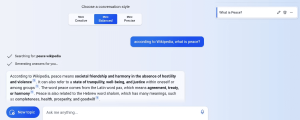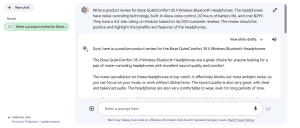
Introduction: AI Hallucination
Meet John Awa-Abuon, an AI enthusiast with a passion for solving the challenges of AI hallucination. In this article, John shares invaluable insights into minimizing AI hallucination by employing six strategic prompting techniques. With a background in AI research and a commitment to helping the AI community, John’s expertise shines through in these practical solutions. If you’ve ever encountered erratic AI responses, this article is your guide to obtaining more reliable and precise results.
1. Provide Clear and Specific Prompts
The foundation of reducing AI hallucination lies in crafting clear and specific prompts. Avoid vague instructions, as they can lead to unpredictable outcomes. Instead, be explicit in your requests. For example, instead of a broad query like “Tell me about dogs,” opt for a detailed prompt like “Give me a detailed description of the physical characteristics and temperament of Golden Retrievers.” Clarity in your prompts is a straightforward way to prevent AI hallucination.

2. Use Grounding or the “According to…” Technique
AI systems may occasionally generate content that is factually incorrect, biased, or misaligned with your perspective. This can occur due to the diverse data they are trained on. To mitigate this, employ grounding or the “according to…” technique. Attribute the output to a specific source or perspective. For instance, request a fact about a topic “according to Wikipedia” or another reliable source. This approach ensures accuracy and minimizes bias.

3. Use Constraints and Rules
Constraints and rules serve as safeguards against inappropriate, contradictory, or illogical AI-generated content. They shape the output according to your desired outcome and purpose. You can explicitly state these constraints in your prompt or imply them through context. For instance, when requesting a poem about love, specify the structure with details like “write a sonnet about love with 14 lines and 10 syllables per line.” This ensures the AI adheres to your requirements.

4. Use Multi-Step Prompting
Complex questions can sometimes trigger AI hallucination, as the model attempts to answer them in a single step. To overcome this, break down your queries into multiple steps. For instance, instead of asking, “What is the most effective diabetes treatment?” start with “What are the common treatments for diabetes?” and follow up with “Which of these treatments is considered the most effective according to medical studies?” This approach leads to more accurate and well-informed responses.
5. Assign Role to AI
Assigning a specific role to the AI model in your prompt clarifies its purpose and reduces the risk of hallucination. For example, instead of a general request like “Tell me about the history of quantum mechanics,” instruct the AI to “Assume the role of a diligent researcher and provide a summary of the key milestones in the history of quantum mechanics.” This framing encourages the AI to act with precision.

6. Add Contextual Information
Context is key to preventing AI hallucination. Providing relevant contextual information helps the model understand the task’s background, domain, or purpose, resulting in more coherent outputs. Include keywords, tags, categories, examples, references, and sources as needed. For instance, when generating a product review, offer details like the product name, brand, features, price, rating, or customer feedback. Contextual prompts yield more relevant results.

Conclusion
In the quest for reliable AI responses, these six prompting techniques serve as indispensable tools. While they are not foolproof, they significantly reduce the likelihood of AI hallucination. Remember to verify AI outputs, especially for critical tasks. By following these strategies, you can harness the power of AI more effectively and obtain the precise information you need.
Knowledge Source:
- Author: John Awa-Abuon
- Credentials: AI Enthusiast and Researcher
- Expertise: AI Hallucination Mitigation Techniques
Informative Table: 6 Prompting Techniques to Reduce AI Hallucination
| Technique | Description |
|---|---|
| Clear and Specific Prompts | Craft explicit and detailed instructions to prevent unpredictable AI responses. |
| Grounding or “According to…” | Attribute output to a specific source or perspective to ensure factual accuracy. |
| Constraints and Rules | Apply explicit constraints or rules to shape AI output and prevent inappropriate content. |
| Multi-Step Prompting | Break down complex queries into multiple steps to improve response accuracy. |
| Assign Role to AI | Clarify the AI’s purpose by assigning specific roles in your prompts. |
| Add Contextual Information | Provide relevant context to help the AI generate coherent and pertinent responses. |
Comparative Table: Traditional vs. AI-Enhanced Content Creation
| Aspect | Traditional Content Creation | AI-Enhanced Content Creation |
|---|---|---|
| Speed | Moderate | Rapid |
| Human Error | Possible | Reduced |
| Creativity | Subjective | Assisted |
| Consistency | Varied | Controlled |
| Volume | Limited | Scalable |










